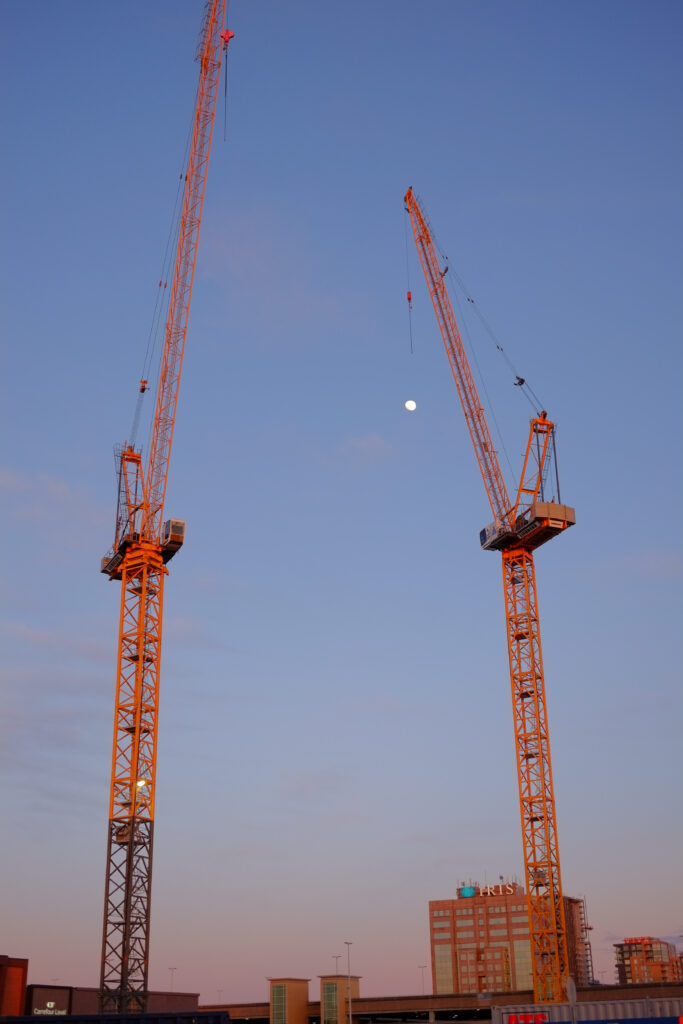This is it. The long rumored “Half frame” Fujifilm compact camera has been announced. Its name is X half, first of its name. A lot of the new videos on my YouTube feed are about it today, and this is my cold take as I don’t have the camera.
It’s not the new revision of an existing one camera. It’s a new concept, like when Fujifilm released the X100 back in 2011. I don’t know if the Pentax 17 triggered this or if there is some sort of trend among camera designers in Japan, but Fujifilm decided with the X Half to embrace the “half frame” vertical. Note that in that context the use of half frame refer to the camera using 35mm film that use half the frame (vertically) in order to provide more images per roll. Notable vintage half-frame cameras include Olympus Pen (the name was reused for their Micro 4/3 compact line), Ricoh Auto Half, Canon Demi EE17 and Canon Dial, they were build for a purpose: smaller size. They came out of favour as more compact point and shoot were available.
Overview
It has an optical viewfinder, more like what was on the X10, with a 90% coverage.
It has a vertical screen and a 1″ (8.8 x 11.7mm) sensor, vertical with a cropped aspect ratio of 3:4 producing 18 Mpix images. This is not half a full frame. It’s much smaller.
The lens is a 10.8mm (32mm equivalent) f2.8. It is auto-focus, has a manual focus ring and an aperture ring with a knob. You can shoot aperture priority, or toggle it to A.
It doesn’t produce raw files. Like other Fujifilm cameras it has film simulations, 10 of them, and 19 filters (the X-M5 has 13), some of them seen on the Instax Evo. For nostalgia there is date stamp option, that will imprint into the picture the date, using a 7-segement style led display, like in the 80-90s — probably one of the things I dislike the most — but if you want to emulate film cameras, then it’s a must have. Film simulations and filters are mutually exclusive, like on other X-Series.
Controls
The X half has a physical lever by the thumb rest, a lever that looks like the winder on film cameras. Some Instax cameras have this kind of lever to trigger printing the picture. Outside of film mode (more on this later), it is used to trigger the diptych feature: take a picture, pull the lever, and the next image will be part of a diptych, a combo of two pictures. It is what Fujifilm calls 2-in-1, and apparently it also works with movies.
Otherwise there is not so many other physical controls: an exposure compensation dial under the shutter button, a still/video toggle, playback button, and a flash on/off switch on the side. Everything else is done through the vertically oriented 450×680 dots touch screen at the back that also offer live view, combined with the smaller touch screen strip to its left. The film simulation is selected via that touch screen strip whose position reminds us of the window that show the type of film loaded on point and shoot film cameras. Nice touch, probably inspired by the X-Pro3 film simulation screen that was shaped like the holder of the top of a cardboard film box. When shooting in S or M mode, the shutter speed is changed from the same touch screen, and few other feature are controller through swipes.
The film mode
The film mode is the main part of the “fun” this camera promotes.
When you toggle the film mode, the camera switches to a mode where you select a number of frames (36, 54 or 72) and a film simulation, and you stick to it until you finish the roll, either by shooting all frames or by cancelling it. After each frame you must wind with the lever to advance. Also you are required to use the OVF and you can’t use the rear LCD to view the picture. Instead it becomes the control panel, including a simulated LCD display as found on a 90s film cameras. About the roll size, since it’s a half frame, I don’t understand why 36 has 18 exposure rolls have never been a thing. 48 would have made sense for a 24 exposure role. 54 is twice 27 which is how much I could get out of a Fujifilm 24 exposure roll, or how much you get out of their disposable film cameras. Well, if going for accuracy, this isn’t it.
The rest of the film mode is addressed by the X half mobile app, to produce “contact sheet”. Each roll is in its own folder on the card.
If this camera is a love letter to film shooting, why didn’t you make a film camera, Fujifilm? (I know, it’s complicated) I wonder if Fujifilm sent one to some the film shooter crowd on YouTube.
Other features
The limited video mode, toggled with a physical button, can record up to 2160×1440 vertical short videos (less than 60 sec). This is not a camera for shooting video.
A LED makes for the built-in flash. While this is bright enough, it doesn’t give the flash look as it doesn’t freeze the subject like a strobe. Unfortunately the cold shoe on top doesn’t allow the use of an external flash.
Other features include direct Instax Link printer support, unlike more expensive camera.
The X half is available in three colours: black, charcoal and silver. I would pick charcoal I think.
Missing
It’s hard to know what is missing without having the camera, but raw file output is clearly one. True flash strobe, which is important for going with that retro image look is another one.
Also I haven’t seen in the various review how to configure film simulation recipes, and that one is probably a bummer. A big missed opportunity in my opinion. I think, Fujifilm should really capitalize on the recipes as user feature, but the question is whether the hardware behind it is similar to the other X series or if it is much less powerful to offer all the parameters.
Conclusion
At an MSRP of CA$999, (it’s US$849 with tariffs down south) it is not especially cheap. The X-M5 (body-only) is barely more money. While this is cheaper than the X100VI (less then half the prices), it is not a cheaper version of the X100VI, not at all and is so far the only other compact camera in the Fujifilm lineup — three if you count the GFX100RF — in a market segment largely abandoned by most vendors.
I think the only way I will try this camera is if I get it on loan. Fujifilm, if you hear me, hit me up.
DPReview says Fujifilm’s new camera is silly and fun, but is it just a joke?, a headline which made me think “if only they made the announcement on 1st of April”, while Chris and Jordan from Petapixel said “it’s a lot of fun”.
Will the X half become the new camera of the TikTok generation?

